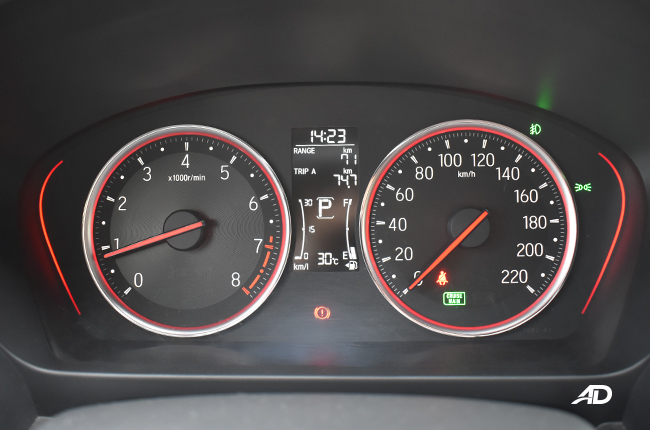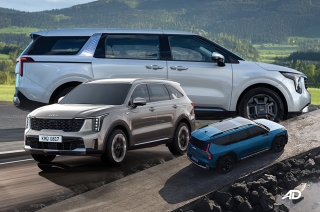
In recent years, automotive technology has experienced a rapid evolution, transforming various aspects of the driving experience. One significant advancement has been the shift from traditional analog gauge clusters to modern TFT (Thin-Film Transistor) displays. This shift has sparked a debate among car enthusiasts and manufacturers alike, raising questions about the pros and cons of each option. In this article, we will explore the battle between TFT and analog gauge clusters, discussing their advantages, disadvantages, and potential suggestions for improvement.
The Pros and Cons of TFT Gauge Clusters

Analog gauge clusters, the traditional stalwarts of automotive design, have their own set of advantages. One significant benefit is their simplicity and ease of use. Analog gauges provide a straightforward representation of information, with each gauge dedicated to a specific parameter. This simplicity reduces the potential for confusion and allows drivers to assess their vehicle's status at a glance quickly.
Another advantage of TFT clusters lies in their ability to integrate with advanced driver-assistance systems and other modern technologies. They can seamlessly display information from navigation systems, multimedia interfaces, and even smartphone connectivity. By consolidating various functions into a single digital dashboard, TFT clusters enhance convenience and reduce driver distraction.
However, TFT clusters are not without their drawbacks, and this lies more in the software and interface used. A notable concern from some manufacturers in their TFT displays is their potential for information overload, in the sense that vital information about the vehicle is showcased in a manner that is not conducive when driving. With so much data available on a single screen, there is a risk of overwhelming the driver with unnecessary information or creating a cluttered interface. Designers must strike a balance between providing essential information and avoiding excessive visual distractions. Low-cost TFT gauges could also be an eyesore since their low resolution has the potential to age or appear dated in the cabin relatively quickly compared to conventional analog gauges.

Moreover, TFT clusters heavily rely on electrical power, making them susceptible to failure in the long run. This vulnerability can compromise the functionality of the entire display, rendering important information inaccessible to the driver. In contrast, analog gauges rely less on electricity, ensuring their reliability even in critical situations.
In some cases, though uncommon, when the vehicle is first used throughout the day, TFT clusters can be quite laggy, which could be annoying at times since you sometimes have to wait for all the necessary information to be displayed before driving away
The Pros and Cons of Analog Gauge Clusters

Analog gauge clusters, the traditional stalwarts of automotive design, have their own set of advantages. One significant benefit is their simplicity and ease of use. Analog gauges provide a straightforward representation of information, with each gauge dedicated to a specific parameter. This simplicity reduces the potential for confusion and allows drivers to assess their vehicle's status at a glance quickly.
Furthermore, analog gauge clusters require minimal electrical power to function, reducing the risk of failure due to electrical issues. They are also known for their durability, with mechanical components that can withstand harsh environmental conditions and maintain accurate readings over time. Analog gauges have a timeless aesthetic appeal that many car enthusiasts find appealing, giving a classic and nostalgic touch to the vehicle's interior. These gauges can also be refurbished and have their parts replaced. Digital clusters may require the vehicle owner to swap out the entire assembly or the entire screen should something go wrong. An analog cluster is also cheaper to repair as it’s just a bunch of motors, a simple circuit board, and needles that display information compared to a TFT cluster which will likely have a more complex system of circuits and processors, as well as a bright screen. Not to mention that analog technology has been around for a while so there are likely spare parts in the aftermarket that you can get for a nominal price. On the other hand, TFT clusters are new, and getting a replacement system will likely cost you a lot of money that’s if there are no spares available.

However, analog gauge clusters do have limitations. They lack the adaptability and customization options offered by TFT displays. With fixed designs, it is challenging to incorporate additional features or change the layout to accommodate evolving driver needs. Analog gauges also tend to be less precise than their digital counterparts, making it more challenging to read values with absolute accuracy.
What do we think?

While both TFT and analog gauge clusters have their merits, a hybrid approach that combines the best of both worlds could be the future direction for automotive displays. Manufacturers could consider integrating analog-style gauges with TFT technology to offer the benefits of customization, versatility, and advanced features while retaining the timeless appeal and reliability of analog gauges. Porsche, with their 911 gauge clusters, does this blend of TFT and analog perfectly with a beautiful rev counter and side TFT displays for monitoring vehicle information. However, it does appear that full TFT displays are going to be the look of the future with new cars coming out with fully digital displays with every new car released.
Additionally, user experience should be a central focus when designing TFT clusters. Simplifying the interface and optimizing the display layout can greatly enhance usability. By prioritizing essential information and employing intuitive design principles, designers can minimize distractions and ensure that drivers can quickly access critical data.

To address the concern of information overload, automakers could implement adaptive display modes. These modes would automatically adjust the amount and type of information displayed based on the driving conditions or driver preferences. For example, during normal driving, the cluster could present basic information such as speed, fuel level, and engine temperature. However, when the vehicle enters a high-stress situation or the driver engages with certain features like the navigation system, the display could adapt to provide more detailed information or guidance. Quite a few cars already come with this, but it has yet to be a standard feature for all TFT displays.
Furthermore, incorporating redundant systems can enhance the reliability of TFT clusters. By including backup power sources or redundant circuits, automakers can minimize the risk of complete display failure due to electrical issues. This approach ensures that critical information remains accessible, even in situations where the vehicle's electrical system experiences a malfunction.

Another area of improvement lies in the integration of augmented reality (AR) technology. By overlaying digital information onto the real-world view, AR can provide a seamless and intuitive way to present data to the driver. For example, speed and navigation instructions could be projected onto the windshield, allowing drivers to keep their eyes on the road while still receiving essential information. This integration would combine the clarity and customization of TFT displays with the simplicity and natural interaction of analog gauges. BMW and Audi are two manufacturers that have streamlined this process, making for a transparent information view at all times with minimal distractions.
Lastly, continued advancements in display technology, such as the development of flexible and curved screens, could revolutionize the design of gauge clusters. These displays have the potential to conform to the shape of the dashboard, creating a more immersive and visually appealing experience. Additionally, improved resolution and color reproduction would further enhance the clarity and readability of information, ensuring that drivers can interpret data with ease.
The best decision is an informed decision
The cars of today are packed full of features, and sometimes, it can be all too easy to get lost and overwhelmed by the sheer amount of options available. Luckily, here at AutoDeal.com.ph, it’s our duty to provide you with the best, most accurate, and most up-to-date information about all the cars available in the local market. Browse through hundreds of models and specific variants, and learn everything you need to know about the automotive market through our written and video reviews. Once you’ve made up your mind about the car of your dreams, simply hit “Get Quote,” and dozens of dealers near you will provide official quotes in a matter of minutes.
Latest Features
-
An all-electric future: The Porsche Macan Electric / Featured Article
Porsche’s Macan goes all-electric; it’s a new beast with an electrified heart, yet unmistakably Porsche in performance and spirit.
-
Which Kia should I buy? / Featured Article
We’re here to help you decide which Kia vehicle is best for you, whether it’s a sedan, crossover, or minivan.
-
Why Lynk & Co is a good option for luxury car buyers / Featured Article
Lynk & Co offers premium value for those exploring the luxury market.
Popular Articles
-
Electric Vehicles in the Philippines for under P1 million
Jerome Tresvalles · Aug 19, 2025
-
Top 3 Cars For Every Lifestyle—What Cars Are Right For You? | Behind a Desk
Caco Tirona · Apr 24, 2024
-
5 Tips to Maximize Fuel Efficiency
Jerome Tresvalles · Sep 09, 2024
-
Five driving habits that are draining your fuel tank
Jerome Tresvalles · Jun 24, 2025
-
Can engine braking harm your engine?
Jerome Tresvalles · Sep 11, 2025
-
Do electric cars even need maintenance?
Jerome Tresvalles · Oct 23, 2024
-
Best vehicles for an active outdoor lifestyle
Shaynah Miranda · Jul 25, 2024
-
How to drive different types of vehicle transmissions
May 23, 2024
-
5 easy ways to keep your car interior clean
Allysa Mae Zulueta · Nov 15, 2021
-
How to survive Metro Manila traffic
Earl Lee · Aug 16, 2022



